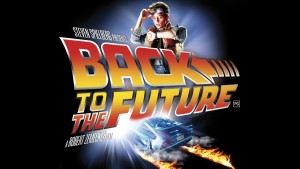The concept of integrated marketing communications has been continuously evolving over the years, but one question that remains is HOW exactly has it changed from then…..to now?
This comic definitely holds true as there are still a number of companies and brands that either don’t understand integrated marketing communications well enough or if they do understand how it all works, don’t utilize it enough. But I’m getting a little ahead of myself. In order to have a clear idea of the perceptions of integrated marketing communications at the present time, we have to take a little trip “back to the future” to see what companies’ first impressions were of this very powerful advertising method….
What made the concept of integrated marketing communications so different in the beginning was that it offered a whole new approach to how companies and brands advertised and reached potential consumers in such a way that combined both “online and offline tactics around a single marketing strategy” (Olenski, 2012). At first glance, this seems like a great method right? Well some marketers didn’t feel so enthusiastic about it initially and compared the idea to something of a fantasyland; “an ongoing process made up of many discrete but valuable steps, each contributing to the greater cause” (Olenski, 2012). The need for integration among advertising platforms was considered to be inevitable and the means by which such integration would be achieved was a source of uncertainty.
So what exactly are marketers saying now about integrated marketing communications???
Many major companies and brands (such as Red Robin for example) are aligning their messaging strategies with their online and offline marketing, more so specifically when they are utilizing the traditional media outlets. Integrated marketing communications are especially effective when it comes to promotions or targeted offers for consumers. According to Dwight Griesman, Chief Marketing Officer for Forrester, “online has a proven ability to amplify the message, reach and impact of our marketing aka traditional word of mouth marketing on steroids, and then some. Integrating your messages, benefits, branding . . . makes tremendous sense. If the concept is good enough to take to market, then it should be good enough to be executed in an integrated manner. We have learned that it is not about bricks or clicks, but bricks and clicks, and that there is real and valuable crossover across retail channels. Why would those same dynamics not generally apply in other areas as well” (Olenski, 2012).
So what does this tell us? Ultimately, integrated marketing communications has the power to reach a far greater audience than by just using traditional media outlets alone. But that reach is dependent upon brands developing a solid strategy around a single, unified message. “The most important element remains that customers want and expect a consistent experience across all of their touch points with companies and products” (Olenski, 2012).
REFERENCES
Olenski, S. (2012). Integrated marketing communications – Then and now. Forbes.com. Retrieved from http://www.forbes.com/sites/marketshare/2012/05/31/integrated-marketing-communications-then-now/




One Response to Integrated Marketing Communications: THEN and NOW